Higher yields, healthier crop and tasty forage
“A fresh and tasty crop in the silage, that is the most important thing for a good feed intake,” is Ed Nieuwenhuizen’s firm opinion. As a contractor, he saw good results with Grow PEQ Maize at his customers. On his own beef farm last year, he put it to the test.
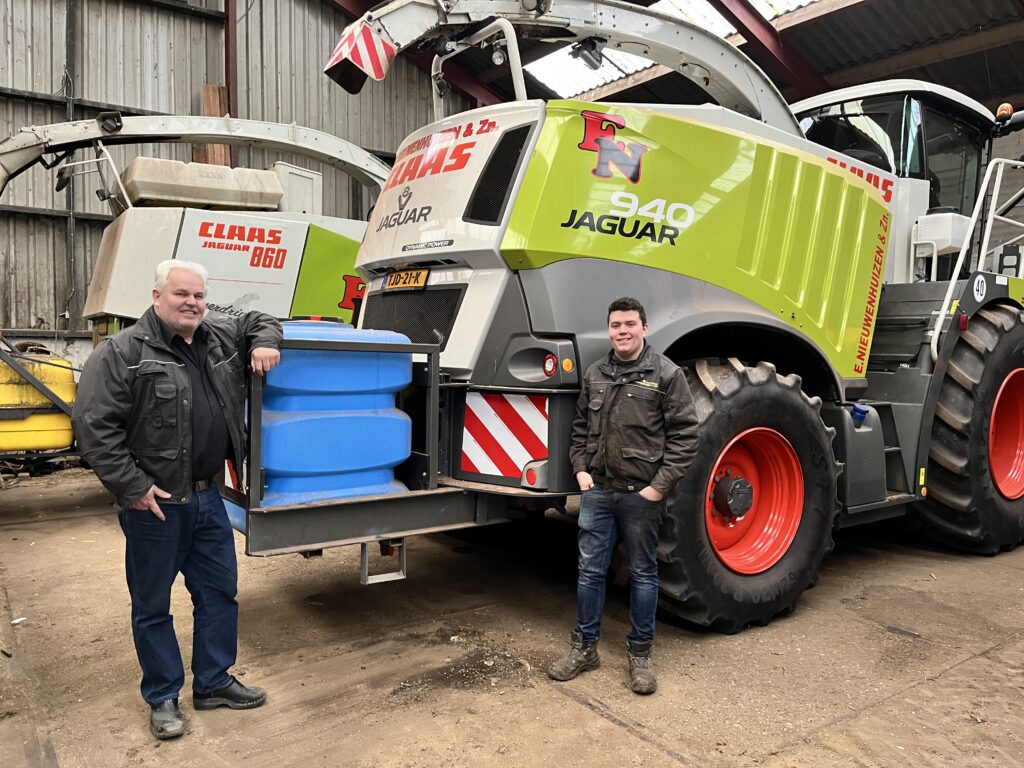
As an agricultural contractor, Ed Nieuwenhuizen visits many (dairy) farms around Sprang-Capelle. For several years, he has been applying the foliar stimulant Grow PEQ Maize simultaneously with maize weed control for some of his customers. “I immediately noticed that the treated fields had better-filled cobs and the crops matured earlier. Despite that, the crop stayed beautifully green, resulting in a fresher crop in the silo. In my opinion, this makes it tastier and leads to better feed intake,” Ed explains about his first experience with Grow PEQ Maize.
Setting up his own trial
“But there are so many products on the market making all kinds of promises, so I wanted to be sure before advising my customers. That’s why last year we set up two trial plots on our own beef farm. To really see the difference, we treated alternating strips within the same fields,” he explains. Besides contract work, Ed and his son Erwin grow another 50 ha of maize for their Blonde d’Aquintaine beef bulls.
Treated strips clearly visible from above
Drone images made the difference instantly clear. “Erwin flew a drone over the trial fields, and we could clearly see which strips had been treated. At that point, we didn’t know the exact numbers, but we could already see the product had a positive effect. That’s when we decided to really get going with It”. So just before the crop was harvested, a few strips were chopped out and Nieuwenhuizen invited his customers to come and see the results.
Better filled and heavier cobs
“The most noticeable thing during the demo was the cob filling. The treated plants had significantly better-filled cobs compared to the untreated plants. Likewise, the root systems of treated plants were much better developed. With the extreme weather conditions we face nowadays, a strong root system is becoming increasingly important,” Ed emphasizes. Randomly, 10 plants from treated and untreated areas were assessed for height, stem diameter, and cob weight. The quantitative differences, as shown in Table 1, are overly clear.
| Contractor Nieuwenhuizen | Treated | Untreated | Difference |
| Plant length (m) | 2,57 | 2,44 | 105% |
| Stem diameter (cm) | 2,37 | 2,23 | 106% |
| Cob weight (gr) | 2760 | 2475 | 112% |
| Total weight (kg) | 6,71 | 6,33 | 106% |
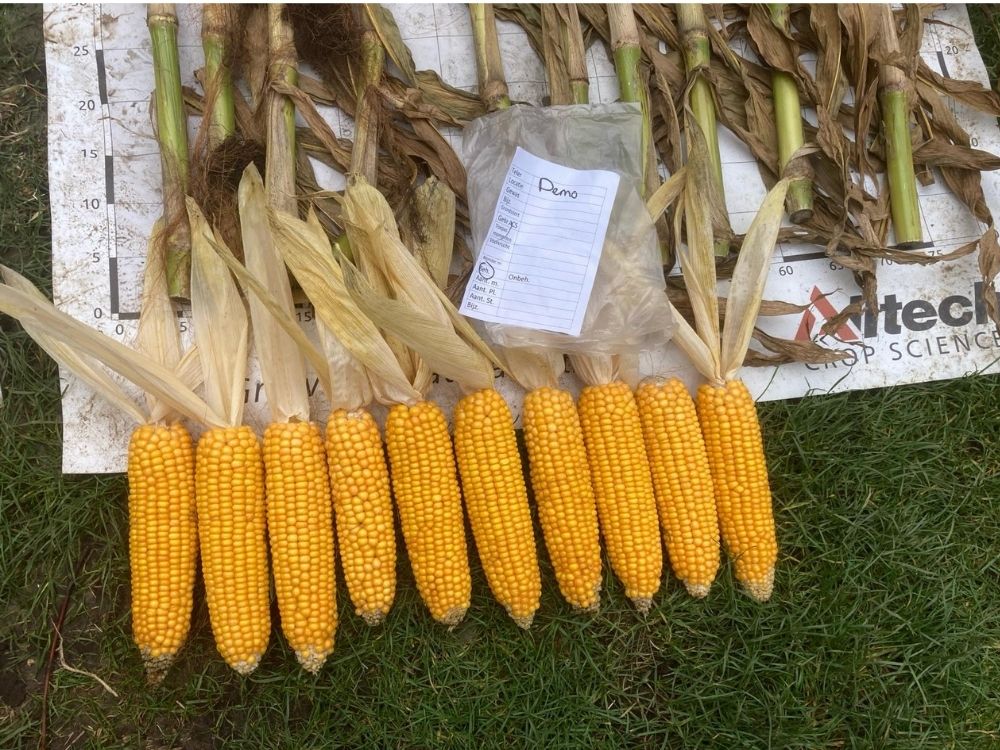
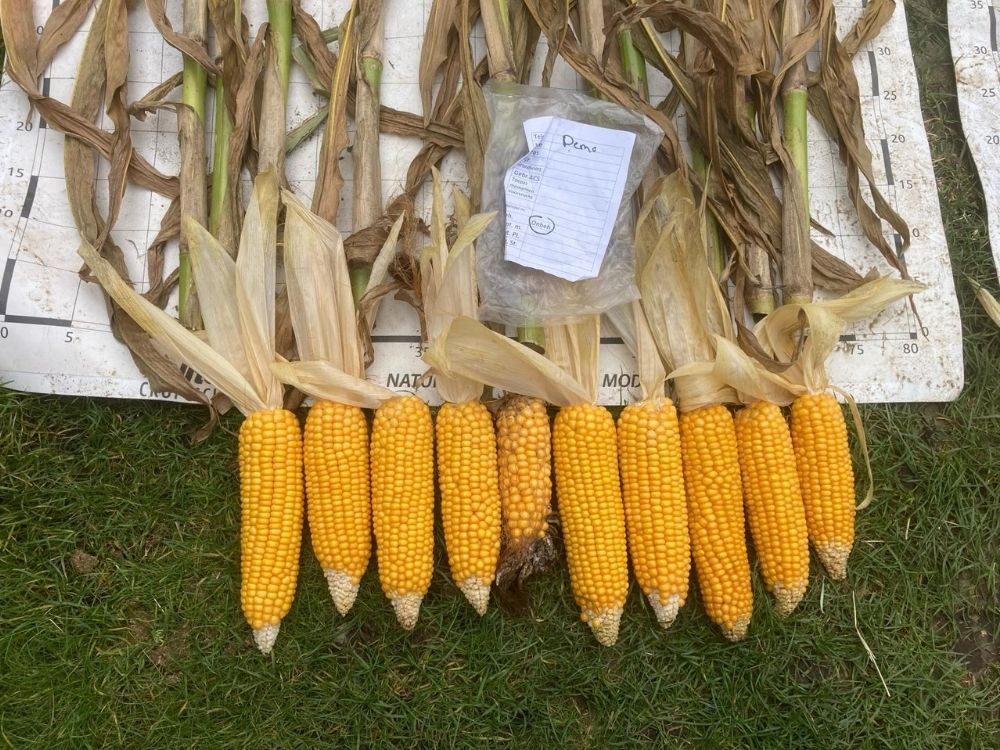
Less mycotoxin impact
Higher yield is important, but quality is just as crucial. To investigate this, samples from treated and untreated crops were analyzed for mycotoxins*). Table 2 shows the results at Contractor Nieuwenhuizen. The DON load was almost identical, but the ZEA load was significantly lower (-24%) in the treated crops.
| Contractor Nieuwenhuizen | Treated | Untreated | Difference |
| Mycotoxin (DON) ppm | 0,78 | 0,8 | 98% |
| Mycotoxin (ZEA) ppb | 196,9 | 258,1 | 76% |
A lower mycotoxin load indicates fewer molds and yeasts , resulting in a healthier crop. This also affects the ensiling process. Fewer molds and yeasts ensures better preservation and a more stable silage during feeding.
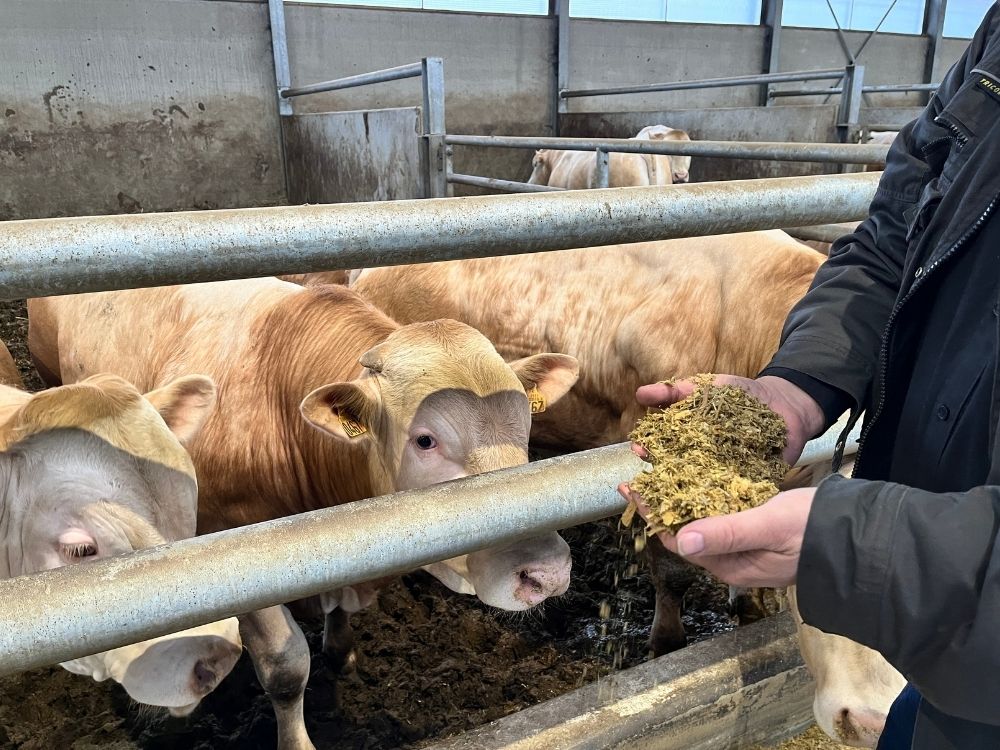
“Good quality maize ensures the bulls’ intake is high”
Short growing season
The challenge of growing both a high quality and high yield crop with increasingly stringent fertiliser standards is becoming more and more pressing. In addition, the obligation to grow a catch crop once every four years on sandy and loess soils creates an extra handicap to obtain sufficient roughage from own soil. “To fulfil the obligation of a catch crop, I want to sow an early maize variety. This must be harvested by the 1st of October after which grass will be sown. Experience shows that by using Grow PEQ Maize, the crop matures faster. So I am going to apply that to harvest the crop on time, but of course it still depends on the weather.”
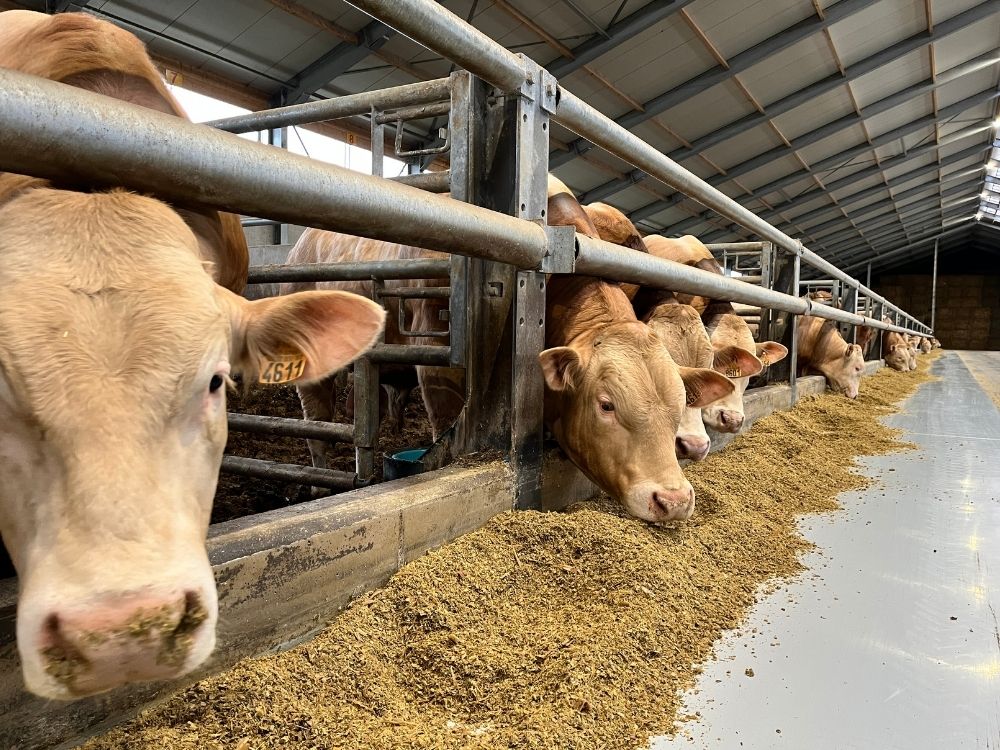
“The bulls’ ration consists mainly of maize, so it must be palatable”
Return On Investment
With the experience gained and a realised Return on Investment of 1:6, Nieuwenhuizen is sufficiently convinced to treat his total maize area of 50 ha with Grow PEQ Maize next growing season. ‘We apply it simultaneously with weed control. This means no extra work for us and no extra expenses for our customer. In any case, I am going to introduce it to all my customers,’ Ed concludes his explanation.
Effect of Grow PEQ Maize on mycotoxin load
Over the past 3 years, mycotoxin measurements were carried out on several plots treated and untreated with Grow PEQ Maize.
Good maize was harvested on average in 2021, while 2022 had many problems with drought and distressed maturity. In contrast, the 2023 growing season was again characterised by high rainfall. DON occurs mainly in cereals and (‘silage’) maize and strongly inhibits protein synthesis and leads to enteric infections. Furthermore, we see reduced feed intake resulting in lower growth and/or milk production. ZEA is a mycotoxin often found in (“silage”) maize and cereals. ZEA has a negative effect on fertility. Rations with high values of ZEA increase embryonic mortality, cysts and reduced fertility.
Samples were tested for DON (deoxynivalenol) in 2021 and 2022 and for DON and ZEA (zearalenone) in 2023. In 2021, the mycotoxin pressure of DON at the plots examined with Grow PEQ Maize was 28% lower. In 2022, the difference was 34% lower compared to the untreated maize. here, the stressful weather certainly played a role. In 2023 we see similar results. On average, the DON load was 33% lower. The ZEA load was more than 40% lower.
| Reduction in % mycotoxin treated vs. untreated | ||
| Year | DON | ZEA |
| 2021 | 28% | |
| 2022 | 34% | |
| 2023 | 30% | 40% |

